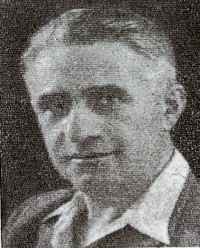 |
|
|
[Page 249]
[Page 250]
Written by Yosef Bialik (Ramat–Hasharon)
[from page 38]
|
As if in a pleasant dream, I imagine my childhood and teenage years in the city of Pabianice. I see the images of various people of my distant past: important folk, educators, businessmen, and all that generation, and the streets, lanes, and buildings: the streets, full of merchants and industrialists gathered in groups at the “Rogeta” [market place], conversing, discussing business while they wait for the Lodz merchants to arrive. Before me I see workers and toilers, and weavers and the various men involved in that industry. I remember a group called “Unity” formed in 1905 who were the first socialists in our community and who raised the consciousness of the mainstream with their energetic round of activities.
I recall the Jewish educators and teachers who, with all their shortcomings, continued the “golden chain” of traditional learning in Judaism and brought National Zionism to everyone, particularly to the notable folk of the community. I also remember the ordinary folk, rooted in simplicity and modesty, who would soon form a bridge between the past and a future where everything would be uprooted.
The general economic status of the population was good despite the struggle for survival, dubious investments and the poor conditions of the Depression. Although many went broke, a decent standard of living was often maintained. Every summer, people would continue to go to holiday resorts, as Pabianice was a place that continued to provide employment and sizeable incomes. Not all these were well to do industrialists: the working class constituted a large segment of the community and these varied socially and in their political opinions. There were the Chasidim and their opponents, the Mitnagdim, the assimilators and the workers – “common folk”. There were power struggles amongst the various factions, but it was mainly the Chasidim and the landlords who fought for communal leadership. The city was full of study centres, known as shtibls, and there were constant arguments between centres and even within them.
Public life at the time, in the hands of both Chasidim and the Industrialists and other well–respected gentlemen, was centred on the Community Centre. The Centre was responsible for the upkeep of synagogues, mikveh, burials and the essential Jewish Services.
These did not include social and communal events, educational or fundraising attempts. I remember that there was an effort to establish a Talmud Torah [a Jewish Boys' religious and educational institute] for poor children but the attempt failed. Most of the Jewish religious Instruction was conducted in cheders [small study group houses] that were financed by parents who employed private tutors. There was little concern for the state of Jewish education until the boycott of 1912 by Polish anti–Semitic Nationalists, when all the Jews stood firmly against the proclamation that aimed to axe Jewish learning. At that time, a new system called “Programation” was developed, a name given to a new system of education that aimed to replace the cheders with a modern national school. This aimed to please a young generation of Zionist parents, who wanted a modern national education for their children. The Chasidim were openly opposed to this program, which they called “A War Against Mitzvot”. The dispute went on for years until the school was forced to close down.
[Page 251]
As the community became wealthier and more independent there was an initiative to provide finance to Jewish businesses, which had difficulty accessing non–Jewish grants. A Jewish Bank was established, and it grew daily until, within months of its beginning, it had a thousand investors. This financial institution aided schools and Jewish centres, and also provided loans to its members.
There was also a plan for the establishment of a Weaving Workshop Co–Operative, in order to oppose the boycott against Jewish weavers in the factories, but this had to be abandoned with the outbreak of World War I in 1914.
[Page 252]
|
|
|
|
|
|
JewishGen, Inc. makes no representations regarding the accuracy of
the translation. The reader may wish to refer to the original material
for verification.
JewishGen is not responsible for inaccuracies or omissions in the original work and cannot rewrite or edit the text to correct inaccuracies and/or omissions.
Our mission is to produce a translation of the original work and we cannot verify the accuracy of statements or alter facts cited.
 Pabianice, Poland
Pabianice, Poland
 Yizkor Book Project
Yizkor Book Project
 JewishGen Home Page
JewishGen Home Page
Copyright © 1999-2026 by JewishGen, Inc.
Updated 27 Jan 2017 by LA